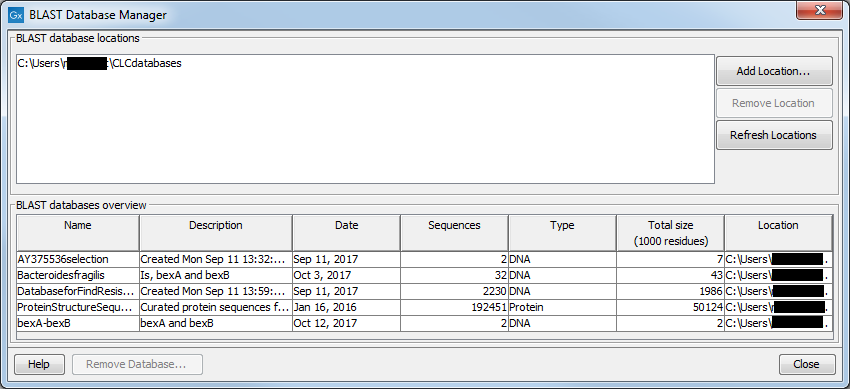Manage BLAST databases
The BLAST databases available as targets for running BLAST against local data can be managed through the Manage BLAST Databases dialog (see figure 26.16):
Tools | BLAST (![]() )|
Manage BLAST Databases (
)|
Manage BLAST Databases (![]() )
)

Figure 26.16: Overview of available BLAST databases.
At the top of the dialog, there is a list of the BLAST database locations. These locations are folders where the Workbench will look for valid BLAST databases. These can either be created from within the Workbench using the Create Local BLAST Database tool, or they can be pre-formatted BLAST databases.
The list of locations can be modified using the Add Location and Remove Location buttons. Once the Workbench has scanned the locations, it will keep a cache of the databases (in order to improve performance). If you have added new databases that are not listed, you can press Refresh Locations to clear the cache and search the database locations again.
By default a BLAST database location will be added under your home area in a folder called CLCdatabases. This folder is scanned recursively, through all subfolders, to look for valid databases. All other folder locations are scanned only at the top level.
Below the list of locations, all the BLAST databases are listed with the following information:
- Name. The name of the BLAST database.
- Description. Detailed description of the contents of the database.
- Date. The date the database was created.
- Sequences. The number of sequences in the database.
- Type. The type can be either nucleotide (DNA) or protein.
- Total size (1000 residues). The number of residues in the database, either bases or amino acid.
- Location. The location of the database.
Below the list of BLAST databases, there is a button to Remove Database. This option will delete the database files belonging to the database selected.
